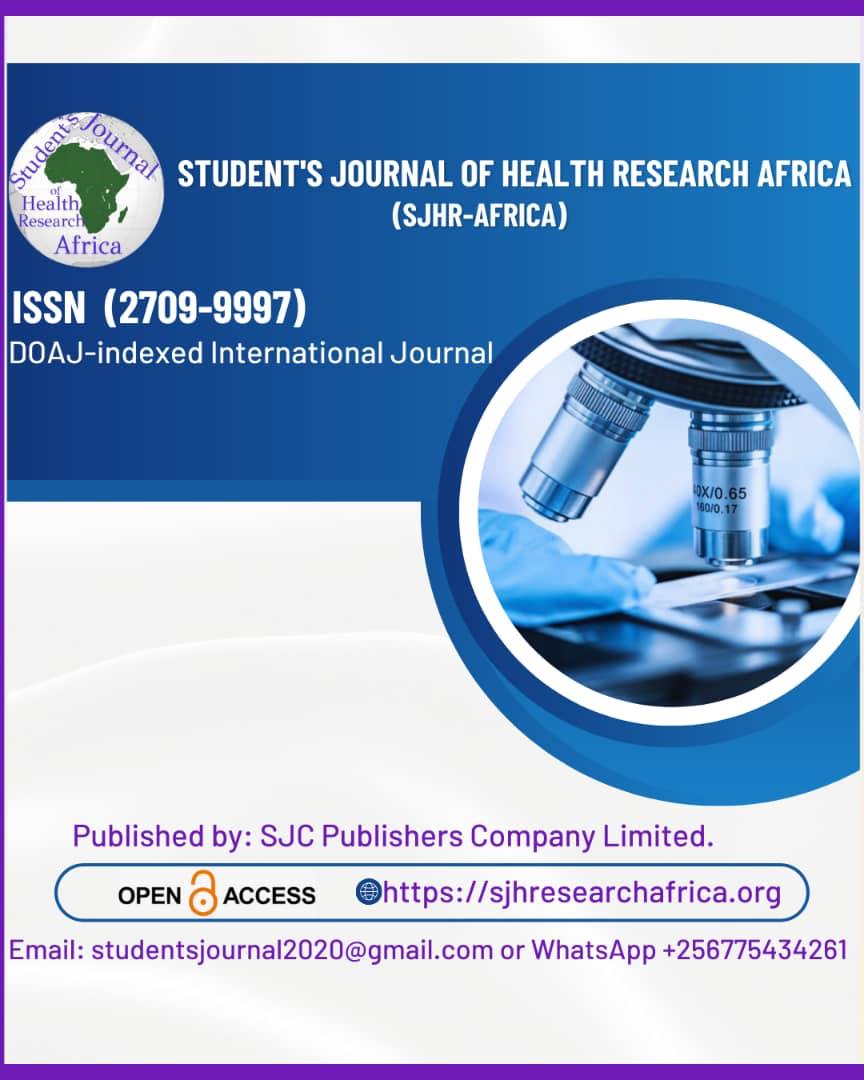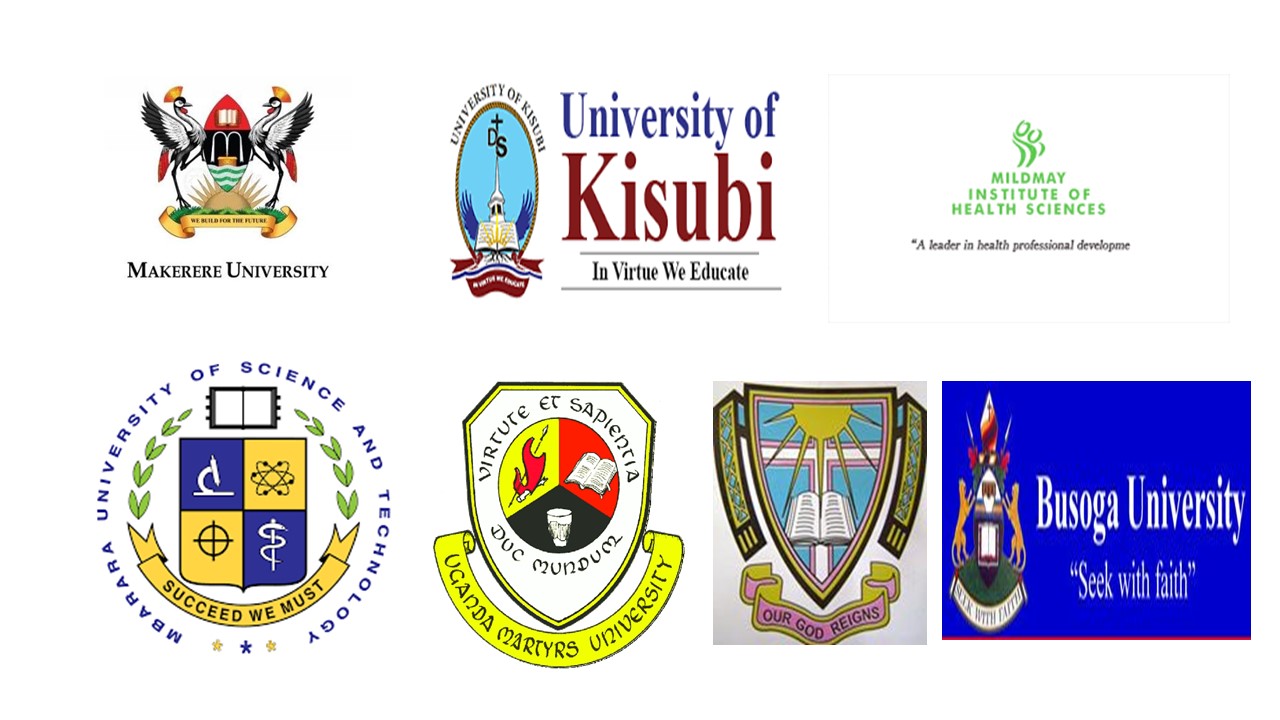Factors affecting oral hygiene practices among elderly people aged 65 years and above living in Nabiteete village, Luweero district, Uganda. A cross-sectional study.
DOI:
https://doi.org/10.51168/sjhrafrica.v6i6.1868Keywords:
Oral Hygiene Practices, Elderly People, Nabiteete Village, Luweero DistrictAbstract
Background
Oral health is an important aspect of general health in the elderly and impacts the quality of life. The general purpose of the study was to determine the factors affecting oral hygiene practices among elderly people aged 65 years and above living in Nabiteete village, Luweero district.
Methodology
A cross-sectional study design was utilized a quantitative research method. A sample of elderly people was determined by random sampling, and data were collected using structured questionnaires of a sample comprising 40 elderly participants residing in the study area. Data were analyzed and presented in the form of tables, graphs, and pie charts.
Results
The secondary school level had the highest number of respondents, 16(40%), with the lowest number, 5(12.5%), of respondents in primary, and the highest number, 14(35%), of respondents were married; the majority lacked adequate oral hygiene knowledge. It highlighted that a significant portion, 70% of the older population, did not receive proper oral care guidance, leading to insufficient oral hygiene practices in later stages of life. Furthermore, socio-economic factors like financial constraints were a significant barrier, with 72.5% of the respondents affected. Lastly, social and cultural factors posed another critical challenge, where 70% of participants reported poor oral hygiene due to the consumption of sugary foods.
Conclusion
The study concluded that enhancing oral hygiene knowledge from an early age and addressing economic and socio-cultural factors are crucial.
Recommendation
The MOH should increase collaboration efforts between dentists and caregivers to ensure elderly people receive optimal oral health, and a proper oral health needs assessment for the elderly people, among others.
References
Agbor, M. A., & Naidoo, S. (2015). Ethnomedicinal plants used by traditional healers to treat oral health problems in Cameroon. Evidence-Based Complementary and Alternative Medicine.
https://doi.org/10.1155/2015/649832
Kim, K.-M., Park, Y.-N., & Lee , J.-h. (2014). Oral health knowledge level on oral care and elder oral hygiene care of the nursing home staff in long-term care facilities. Journal of korean Society of Dental Hygiene, 723-730.
https://doi.org/10.13065/jksdh.2014.14.05.723
M, C., & P, M. (2017). Sweeteners as food additives in the XXI century:A review of what is known and what is to come. Food and chemical Toxicology.
Malale , T., Amani, P. J., & Anna-Karin, H. (2020, Nov 25). Does health insurance contribute to improved utilization of health care services for the elderly in rural Tanzania? A cross-sectional study. Global Health Action .
Marco, P. A., Lorna , M. M., & Wevant, R. J. (2019). Oral diseases: A global public health challenge. The Lancet, 249-260.
https://doi.org/10.1016/S0140-6736(19)31146-8
PMid:31327369
McQuistan, M., & Cho, A.-Q. (2015). Oral Health knowledge among elderly patients. The Journal of the American Dental Association, 17-26.
https://doi.org/10.1016/j.adaj.2014.10.002
PMid:25569494
Moeller, J. F., Chen, H., & Manski, R. (2019). Diversity in the use of specialized dental services by older adults in the United states. Journal of Public Health Dentistry, 79(2), 160-174.
https://doi.org/10.1111/jphd.12309
PMid:30716173 PMCid:PMC6565445
Molete, M., Yengopal, V., & Moorman, J. (2014). Oral health needs and barriers to accessing care amomg the elderly in Johannesburg. South African Dental Journal, 352-357.
Ocwia, J., & Olum, R. (2021453). Oral health seeking behaviors of adults in Nebbi District, Uganda: a community-based survey. BmC Oral Health.
Okullo, I., & et al. (2018). Barriers to oral health care among elderly Ugandans. Journal of Dental Hygiene, 281-288.
Petersen, P. B. (2014). Oral health in aging populations. Journal of Public Health Dentistry, 131-138.
Arineitwe, S. (2023). FACTORS AFFECTING UTILIZATION OF ORAL AND DENTAL SERVICES AMONG PATIENTS ATTENDING DENTAL CLINIC AT KATATE HEALTH CENTER IV, KANUNGU DISTRICT. A CROSS-SECTIONAL STUDY. Student’s Journal of Health Research Africa, 4(3), 17. https://doi.org/10.51168/sjhrafrica.v4i3.302
.Zahid, H. M., Mohammad, A. W., & Sayem, A. (2022). Factors affecting the healthcare utilization from Shasthyo Suroksha Karmasuchi scheme among below-poverty-line populationin subdistrict in Bangladesh: a cross sectional study. BMC Health Services Research.
Downloads
Published
How to Cite
Issue
Section
License
Copyright (c) 2025 Albert Martin Omara, Gerald Ssenyonga, Mawanda Anthony, Mayanja M. Magala

This work is licensed under a Creative Commons Attribution-NonCommercial-NoDerivatives 4.0 International License.






















